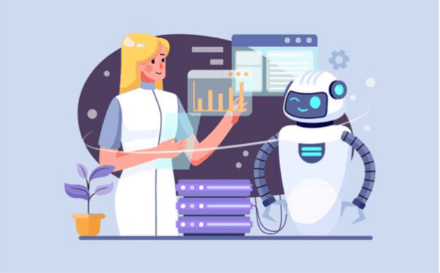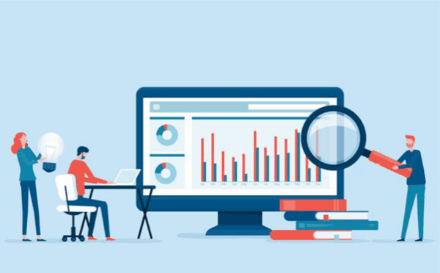Data Analysis Project Ideas in PythonThe analytics process, from locating sources of information to cleaning and processing data, is demonstrated through data analytics projects. Projects allow you to practice utilizing various business intelligence tools and methodologies if you're looking for your first data management position. The best initiatives examine relationships that defy good judgment and provide unexpected answers. This article will show you how to develop data and analytics projects that instantly make you employable. 
What's the benefit of working on a Data Analysis Project?To get a job, you must do data analysis tasks because they demonstrate your suitability for the position to hiring managers. Professionals in this sector must be fluent in various abilities, including scripting languages like Postgresql, R, and Python, data cleansing, and data visualization. You can demonstrate your proficiency with these skills through a data analysis assignment. Additionally, particularly if students lack practical expertise, personal projects are an excellent chance to learn various information analysis approaches. List of Data Analysis Projects ideasParticularly if you're unfamiliar with data analysis, projects are a great method to get experience with the entire process. Here are some fantastic starting project ideas: Project Idea: Scraping the web Web scraping is extracting information from websites, such as photographs, customer reviews, or product descriptions. This data is first gathered and then formatted. The web crawler can be carried out using custom Python scripts, an API, or a web data extraction solution like ParseHub. Here are two common techniques for data scraping: Project Idea: Reddit Due to the vast quantity of data available, including primary analysis in posts and comments and user information, including interaction with each post, Reddit is a popular resource for web scraping. On Twitter, you may extract posts on particular themes from subreddits. Using the Python package PRAW, you can use Reddit's API to scrape the subreddits of your choosing. Then, you can collect data from a single or more discussion forum at once. Reddit datasets can be found on data. The world if you'd prefer to avoid scraping your data. Project Idea: Real Estate If you're interested in real estate, you can use Django to scrape data on residential and commercial properties. The two most popular Python packages for data scraping are BeautifulSoup and Scrapy. Then, you can develop a dashboard to examine the "best" properties based on variables like population, property taxes, public transportation, and schools. To acquire information on real estate and mortgages, you can also employ the Zillow API. Project Idea: Analyzing Exploratory Data Exploratory analysis of data (EDA), which entails digging a dataset to summarise its key features, is another excellent assignment for beginners. EDA aids in deciding whether statistical methods are suitable for a certain dataset. The following projects can help you hone your EDA skills: Project Idea: McDonald's Nutrition Facts Due to their high sodium and fat content, McDonald's meal products are frequently contentious. You may conduct a nutrition analysis of each menu item, including salad, drinks, and desserts, using this Kaggle dataset. Python should first import the Data source. Next, classify things based on characteristics like sugar and fiber content. After that, you can model the outcomes utilizing heatmaps, scatter plots, and bar and pie charts. For this project, you'll need the Python script, Pandas, and Data object libraries. Project Idea: Report on World Happiness Global happiness levels are investigated in the World Happiness Report. In this research, a Penn State University student examines the disparity in happiness levels between the Northern and Southern hemispheres using the well-known data model SQLite. Project Idea: Global Suicide Rates Although there are several datasets about suicide rates, Siddarth Sudhakar's dataset includes information from the World Health Organization, the Monetary Fund, Kaggle, and the UNDP. Use Python to import the data and the Pandas module to explore it. The data features can then be summarised from there. You can find out, for instance, how the GDP per capita and suicide rates are related. Project Idea: Visualization of data The trends, aberrations, and anomalies in your data are communicated through visualizations. Making visualizations is a wonderful place to start if you're new to the industry and searching for a descriptive statistical project. Choose graphs that best fit the narrative you want to convey. Bar graphs and line graphs effectively depict changes over time. Project Idea: Pollution in the United States The Agency releases annual data on trends in air quality for Environmental Protection. EPA pollutant data from 2000 to 2016 are included in this Kaggle dataset as one CSV file. And used the R package OpenAir or the Python Seaborn module, you may visualize this data. For instance, you may simulate how emissions concentrations would alter depending on the hour, the day now, or the month. A heatmap can also determine the times of year that are the most polluted in a specific area. Project Idea: Visualization of History The dissemination of the printing press or patterns in the production and consumption of coffee are only two examples of historical events that can be effectively visualized using data. In this visualization created by Harvard Business School, the biggest US corporations were shown in 1955. Project Idea: Astronomical Visualization Digital photos from contemporary telescopes and satellites are ideal for data visualization. This dataset through data. The world displays asteroids that will come close to Earth in the upcoming 12 months and those that have already done so. Here, you may see real-time visualizations created using the database to get ideas for your research. This website can also determine the asteroid elliptical classes for each data point (e.g., apollo, asteroid, centaur). Project Idea: Visualization on Instagram Jupyter journals and IPython are used in this KDNuggets project to analyze Instagram data. Like in this project, you may utilize Instagram information to contrast the popularity of two presidential campaigns or do a time series analysis to determine how popular a public figure was before and after a significant event. However, you might need to be more capable of showing the graphics in your notebook using regular Python. Project Idea: Sentiment Analysis Natural language processing (NLP) is used in sentiment analysis, sometimes known as "opinion mining," to ascertain how people feel about products, celebrities, and political parties. A sentiment score is given to each input, categorizing it as good, unfavorable, or neutral. To get a position in data analysis, you need surely perfect this talent. Following are some fantastic projects to include in your portfolio: Project Idea: Analysis of Twitter sentiment Social media posts can be grouped based on their polarity or by keywords associated with particular emotions. The Apache NiFi GetTwitter central processing unit collects real-time Twitter messages and ingests information into a messaging queue to get posts on a popular topic or hashtag. Use Twitter's Recent Search Endpoint as an alternative. Using Microsoft Azure's Text Analytics Intelligent Service, which recognizes key terms and entities like persons, locations, and organizations, you may calculate sentiment scores after creating your dataset. Project Idea: Audience Reviews on Google Both as a source of customer feedback and as a project for data analysis, Google reviews are fantastic. Using the Google Plus Business API, you can retrieve location data and reviews. Data junkie Alexandr Bhole utilized Python to conduct sentiment analysis on customer reviews from the Google Playstore in this project on Medium. She then conducted an exploratory analysis of data using Pandas profiling to identify variables, interactions, relationships, and missing values. The sentiment score was then determined by TextBlob based on semantic information and subjectivity. Project Idea: Quora Question Pairing As one of the most widely used question-and-answer websites worldwide, Quora is a prime candidate for data analysis. Users had to classify duplicate question pairs using advanced NLP in a recent Kaggle challenge. For instance, it is incorrect for Quora to split the questions "What is the most populated state in the USA?" and "Which person in the United States has the greatest number of people?" Over 1.3 million lines of possible question duplicate pairings can be found in this Quora dataset. Each line includes the full text of each question, the IDs of each problem in the pair, and a boolean value indicating whether the line has a duplicate pair. A collection of characteristics for a natural language interpreting (NLU) model was built in this project by a group of NYU students using a basic prediction equation known as an n-gram. Researchers then conducted their word embedding studies using the Support Vector Microarray (SVM) implementation module of Scikit. Project Idea: Data Cleaning 
Data cleaning is a crucial component of data processing, and showcasing your data-cleaning abilities is crucial to getting hired. Data cleaning is known as correcting or deleting inaccurate, damaged, duplicate, or insufficient information from a dataset. Results are unreliable when the data is messy. Here are some tasks to put your data-cleansing abilities to the test: Project Idea: Open Data from Airbnb (New York) Using Airbnb's open API, you can extract information about Airbnb vacations from the company's website. Alternatively, you can utilize this current Kaggle dataset for 2019-2020 Airbnb stays throughout New York City. Both data sets contain all the details required to learn more about sponsors and territorial distribution, which are crucial metrics to generate hypotheses and draw conclusions. Project Idea: YouTube Videos Statistics YouTube's most popular trending videos offer a window into the cultural zeitgeist. Several months' worth of data on the most popular YouTube videos from various nations is included in this Kaggle dataset. Included are the title, channel name, publish date, tags, number of views, ratings and dislikes, synopsis, and number of comments for each video. This information could be utilized for
Project Idea: Educational Statistics To find federal data on students with disabilities, this project, taken from the book Computer Sciences in Education Using R, analyses this dataset assemblage gathered from the US Dept of Education Website. Cleaning the variable names can help you prepare the data for analysis. When student demographics are visualized, you may then explore the dataset. Intermediate Projects Ideas in Data Analysis
Suppose you are an intermediate data analyst who wants to develop your career. In that case, you should work on honing your data collection, data science, data gathering, data preprocessing, and data visualization abilities. Following are some fantastic projects to include in your portfolio: Project Idea: Data Science and Data Mining Data mining is the technique of extracting information from raw data. The following data mining initiatives can help you advance as a data analyst: Project Idea: Language Recognition DeepSpeech is a transparent speech-to-text engine that makes use of Google's TensorFlow. Programs that recognize spoken words translate them into text. Download a speech synthesis package like Apiai, SpeechRecognition, or Anderson in Python. Project Idea: System for Recommending Anime Although streaming algorithms are helpful, why not create one for a certain genre? This Kaggle crowdsourced dataset includes information on user preferences for 12,294 anime shows from 73,516 individuals. To create various recommendation engines, you can group related shows based on ratings, characters, and plot summaries. Project Idea: Chatbots Chatbots use natural language processing to comprehend text inputs (conversation messages) and provide responses. The Python Natural Language Toolbox (NLTK) package can be used to create chatbots. Anyone can add dialogue to Github's open-source, machine-learning Chatterbot conversation engine. The library stores the text that users enter for each statement they make. Chatterbot gains the ability to offer more varied responses as it learns from more input, which increases. Gathering, Processing, and Visualization of Information: The process of obtaining, measuring, and analyzing data from many sources to find answers to questions, resolve business issues, and test hypotheses is known as data collection. A successful data analysis project demonstrates mastery of each process step, from locating data sources to visualizing data. Here is a project to improve your abilities in data gathering, cleaning, and visualization: Project Idea: Analysis of Apple Watch workouts The Apple Watch gathers various workout-related information, such as total caloric expenditure, distance traveled (while walking or running), normal heart rate, and mean pace. You can produce visuals using processed data, such as rolling averaged step count. Advanced Projects Ideas in Data AnalysisAre you prepared for a role in senior data analysis? You can include the following projects in your portfolio: Project Idea: Learning Machines With the aid of machine learning, computers can continuously predict outcomes based on the facts at hand without explicit programming. These algorithms forecast new output values using historical data as input. You can try out the following typical machine-learning projects: Project Idea: Detecting fraud Machine learning employs fraud detection models that constantly learn to recognize fresh dangers. Amazon SageMaker is used in this project to train unsupervised and supervised machine learning models, after which they are deployed utilizing endpoints that Amazon SageMaker manages. Project Idea: Recommendation systems for cinema Recommendation systems for cinema rely on information from usage patterns and surfing history. To create a movie recommender, you can use this MovieLens dataset, which consists of 105,339 ratings given to more than 103,000 films. Here are the specifics of each phase. Project Idea: Prediction of Wine Quality Wine classifiers offer recommendations based on the chemical characteristics of wines, such as viscosity or acidity. The three classifier models below are used in this Kaggle project to forecast the wine quality:
Numpy is excellent for working with arrays, whereas Pandas is useful for this kind of data acquisition. Finally, you can view the data using Seaborn and Matplotlib. Project Idea: Netflix Personalization Create an algorithm that leverages item-based collaborative filtering, which generates similarities between commodities based on user ratings, to design a recommendation engine inspired by Netflix. This project establishes filtering capabilities for IMDB evaluations based on travel, actors, subject, language, year through release, and other factors. You can download publically accessible IMDb data subsets to create your dataset. The use of machine learning and artificial intelligence to fuel Netflix's recommendation engines is very similar to Amazon's. The firm predicts what should be advised to a user based on their viewing history, search history, rating history, time, date, and device type. According to statistics, Netflix employed 76,897 "all genres" or original methods in 2014 to decide what films and television shows to suggest to viewers to tailor their experiences and keep them coming back for more. Additionally, the business leverages consumer data to design distinctive web pages for each user. It displays content that it thinks would best pique users' interests and improve their overall platform use. Project Idea: Automatic Language Recognition A subfield of AI called "natural language processing" (NLP) enables computers to comprehend and modify natural language in text and audio. Content can create or break a user's overall experience and engagement with your platform, leaving algorithms for recommendation fueling alone. And Netflix is extremely aware of this! To get a job at a higher level, try to include any of these projects in your portfolio. Context:
Project Idea: Translation of News Python can be used for web apps that convert news from one translation to another. For this research, computer science Abubakar Abid utilized Newspaper3k, a Python package that enables you to scrape virtually any news website. Next, he translated and summarised news stories from English to Arabic using the HuggingFaceTransformers, a cutting-edge natural language model. The algorithm was tested on several topics via a browser demo that Abid built using the Grade package. The translation is the process of conveying the meaning of a text written in the source language through a text written in the target language. Translation can start only once writing develops within a linguistic group, according to theterminological distinction made in English between it and interpreting, which refers to oral or visual communication between speakers of different languages. Since the 1940s, efforts have been made, with varying degrees of success, to automate translation or mechanically assist the human translator due to the laborious nature of the translation process. There is always a chance that a translator will unintentionally convey source-language vocabulary, morphology, or semantics into the intended rendering. On the other hand, these "spill-overs" have occasionally brought in beneficial calques and loanwords from the parent language that have improved recipient languages. The languages they have translated into have been shaped by translators, particularly the early linguistic competence of sacred writings. The Internet development in recent years has made it easier to "language localize" and created a global market for translation services. Project Idea: Autocorrect and Autocomplete A neural network can be built in Python to autocomplete phrases and find grammatical faults. This Github project that employs a language model to edit Python scripts decreases the number of clicks needed to write code. Tokenizing Python code before training the model makes it more effective than character-level prediction using byte-pair encoding. Project Idea: In-depth Learning Neural networks with three or more layers are the focus of deep learning. The design and operation of the human brain served as an inspiration for these artificial neural networks. Use these tasks to hone your deep learning abilities: Project Idea: Classification of Breast Cancer A breast cancer diagnosis is a 2-class issue that relies on identifying benign or malignant biopsy images. In this research, high-level features are found in the input photos using a convolutional network (CNN), and matrix calculations are used to infer a softmax layer. Classification of Images It is possible to train image classification models to identify particular items or features. One may be created in Keras using Python and a CNN. The CIFAR-10 dataset, a well-known computer vision dataset containing 60,000 images divided into 10 classes, is used in this study. You can import the dataset straight from Keras. Datasets because it is already included in Keras' datasets module. There is a complete set of tools in the Multidisciplinary toolset to perform unsupervised and supervised classification with the ArcGIS Spatial Analyst extensions. The Image Classification toolbar is the preferred method for classification and multivariate analysis. The Image Classification toolbar was created to provide an integrated environment for doing classifications with the tools because the classifier is a multi-step workflow. The toolbar offers the extra capability for input data analysis, preparing training samples and signature files, assessing the quality of the training samples and signature files, and aiding in conducting unsupervised and supervised classification. Supervised classification uses the spectral signatures derived from training samples to classify an image. Training samples representing the classes you want to extract can be easily created with the help of the Image Classification toolbar. You can easily create a signature file from the training samples that the multivariate classification tools use to classify the image. Unsupervised classification finds spectral classes (or clusters) in a multi-band image without the analyst's help. The Image Classification toolbar facilitates unsupervised classification by providing access to cluster-creation tools, cluster-quality analysis capabilities, and classification tools. Project Idea: Gender and Age Detection Picture processing enhances images captured by cameras, satellites, airplanes, and cameras used in daily life. This model, a sophisticated Python project, uses the Adience dataset to infer the gender and age of something like a person in an image using Api and a CNN with three convolution operations. The image is processed using various methods and computations based on the analysis. Digitally created images require meticulous planning and research. There are two main processes in processing images, then easy steps. Picture upgrades enhance an image to produce more high-quality images that other programs can use. The other method is the most frequently used when extracting data from a picture. Segmentation is the process of breaking up an image into its parts.
What Skills Required for working on Data Analysis Project?Data analysts can always get better at the following abilities, regardless of their experience or skill set: SQL
Programming Language While significant coding abilities are not required for data analysts, programming in R or Python allows you to leverage more sophisticated data science techniques like natural language processing and machine learning. Processing.
Visualization Technique Data analysts must convey their conclusions using compelling images understandable to both technical and semi-stakeholders. To successfully represent your data, you must be aware of the precise use case for each sort of graphic, including bar charts, histograms, and more. Usage:
Example: Television also produces valuable visuals when it displays computer-generated and cartoon reconstructions of automobile or aviation catastrophes. Computer-generated graphics that depict actual spacecraft in use, out in the universe far beyond Jupiter, or on other planets are some of the most well-known instances of scientific visualizations. Timelines and other dynamic visualizations, such as educational animation, can improve students' understanding of systems that alter over time. Microsoft Excel Data analysts use Excel and other spreadsheet programs to sort, filter, and clean their data. Excel may also combine data using VLOOKUP and do basic computations like SUMIF and AVERAGEIF. To manage data manipulations like arithmetic operations, spreadsheets like Microsoft Excel use a grid of cells arranged in numbered rows and letter-named columns. It has a variety of built-in functionalities to address financial, engineering, and statistical requirements. Additionally, it has a very limited three-dimensional graphical display and can present data as line graphs, histograms, and charts. Data can be divided into sections to show how different things affect it from various angles (using pivot tables and the scenario manager). A data analysis tool is a pivot table. This is accomplished by using PivotTable fields to condense big data sets. It features a programming component called Visual Basic for Applications:
Knowledge of Artificial Intelligence, Natural Language Processing, and Machine Learning Even though computer vision is not a competence that is typically expected for data analyst employment, data analysts with these skills are extremely valuable. While big data is primarily responsible for data modeling and applied statistics, learning algorithms go even further. Learning algorithms go beyond data analytics to gain insights and forecast future trends. How To Promote and Present your Projects on Data Analytics?
An effective data analytics portfolio demonstrates your skills. Every project needs to explain the benefit of the cloud-based platform or model you've created. Describe the technical problem you faced and how you effectively addressed it, the tools you used and why, and how you arrived at your conclusions using carefully chosen graphics. You should include a wide range of projects in your portfolio, such as exploratory study, data cleansing, SQL, and data visualization. Uploading your work to Github will help you boost them. Set your application to "Public" if you're using Tableau to visualize data so that prospective employers may find it online. FAQs regarding Data Analysis Project
|
 For Videos Join Our Youtube Channel: Join Now
For Videos Join Our Youtube Channel: Join Now
Feedback
- Send your Feedback to [email protected]
Help Others, Please Share










